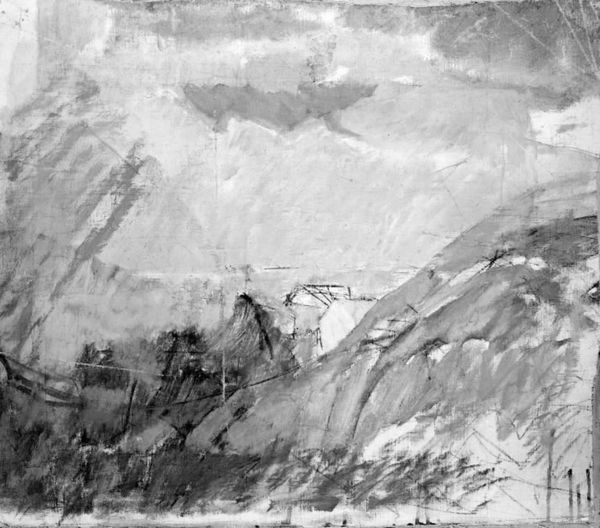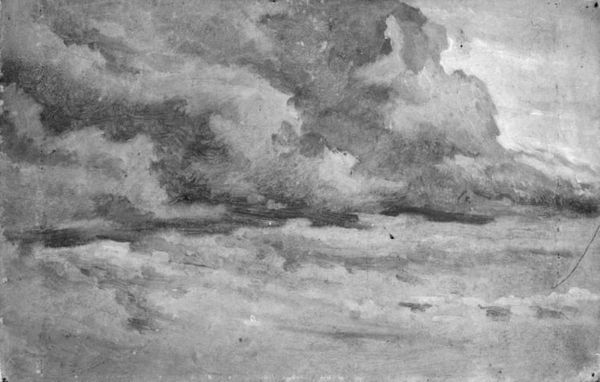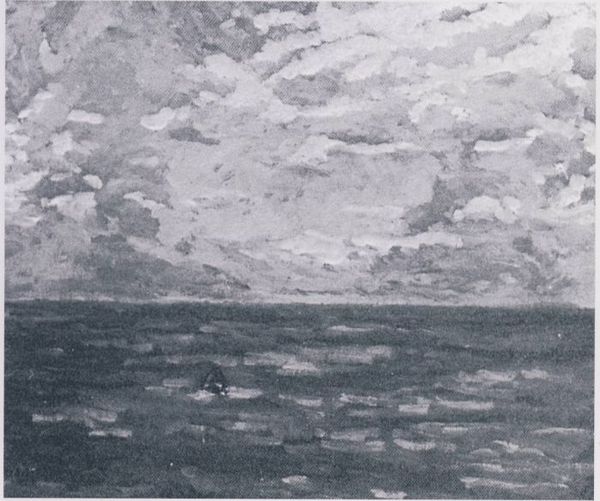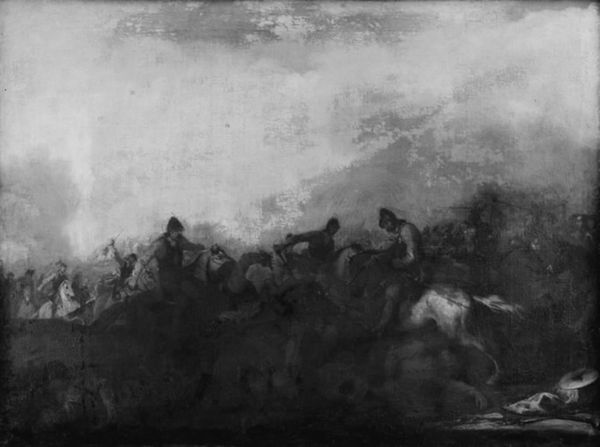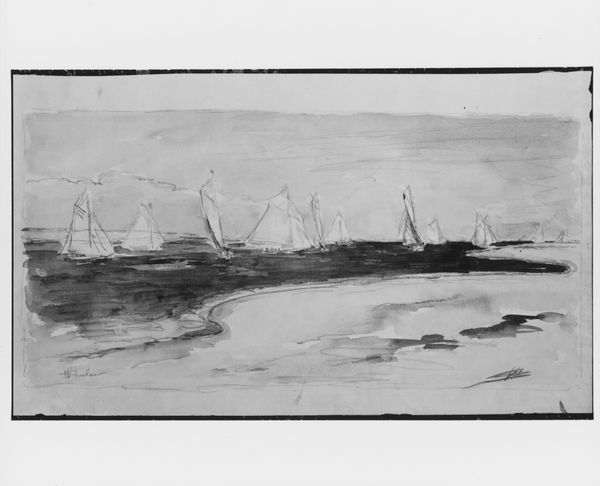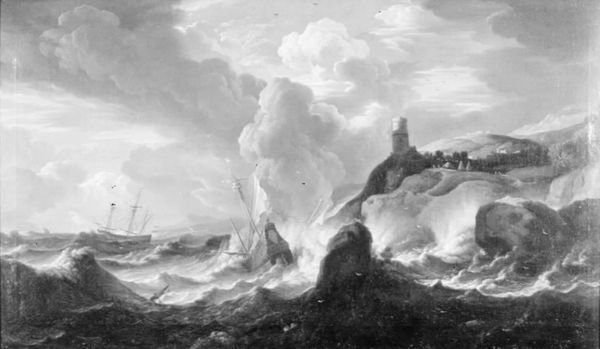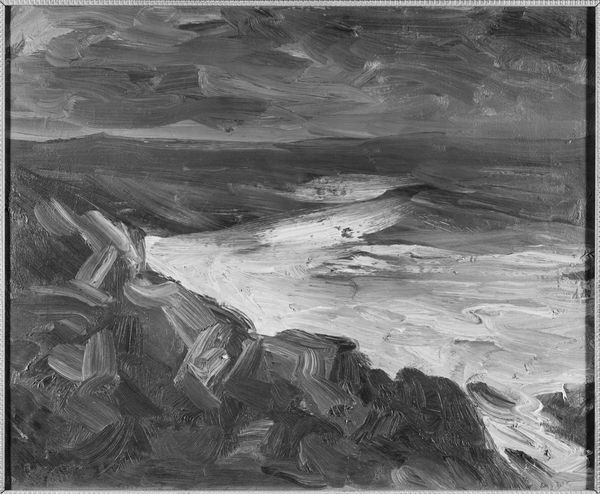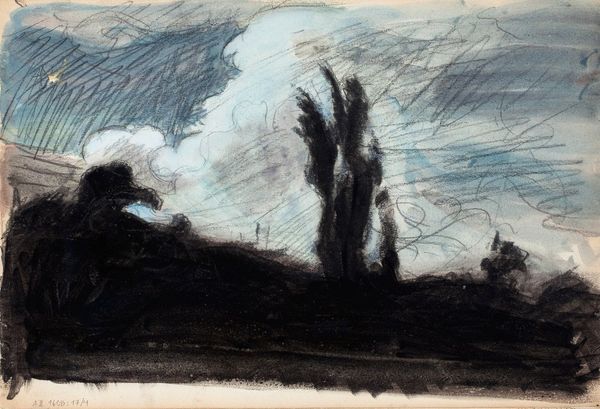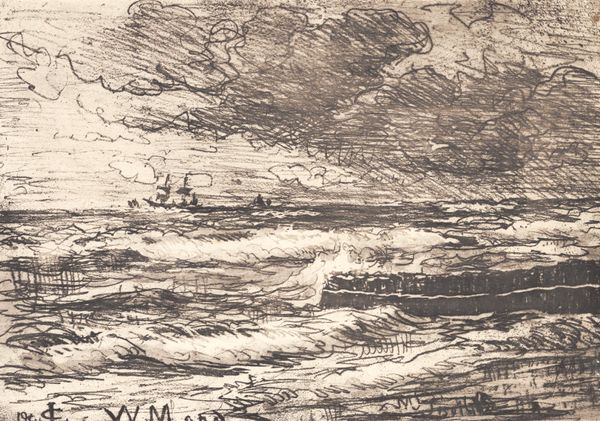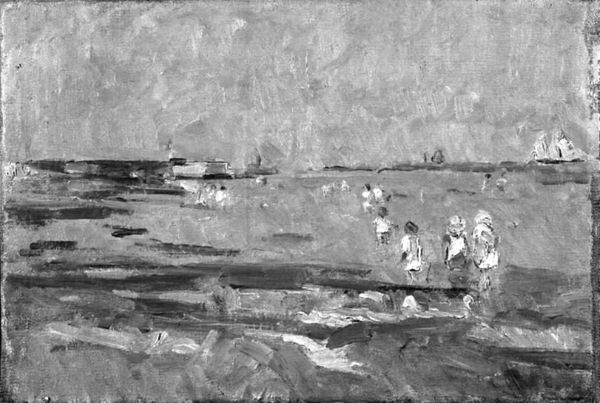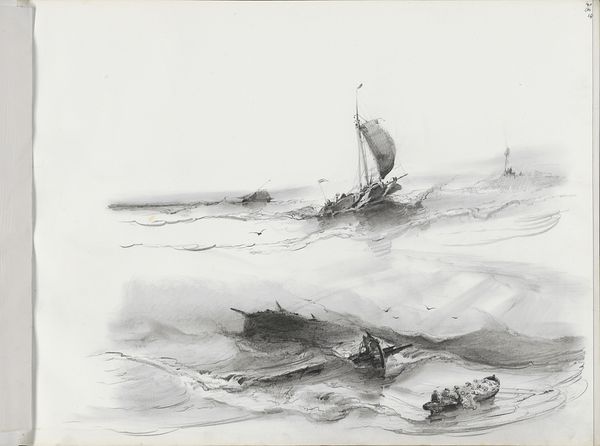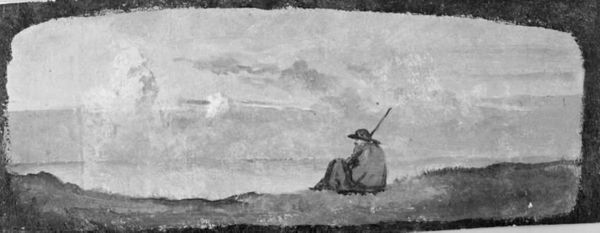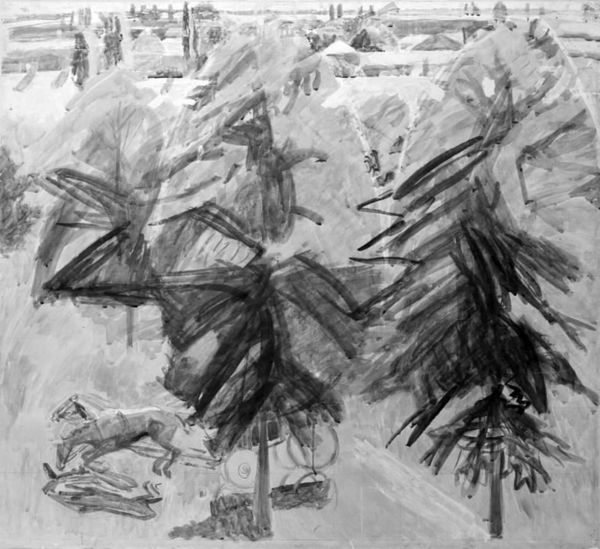
Dimensions: 495 mm (height) x 638 mm (width) (bladmaal)
Editor: We’re looking at Jean-Louis Boussingault's "Venus' Fødsel," created sometime between 1883 and 1944. It's a drawing with gouache, housed at the Statens Museum for Kunst. I find the monochromatic palette and the turbulent brushstrokes create an almost unsettling depiction of such a traditionally beautiful scene. How do you interpret this work? Curator: Oh, it grabs you, doesn't it? Forget Botticelli’s delicate seashell. This Venus seems born of a storm, practically vomited onto the shore. Look at how the dark gouache swirls, hinting at chaos rather than serene beauty. It almost feels like Boussingault is rejecting idealized representations, confronting us with the messy reality of creation. Is it beautiful? Maybe not in a conventional way. But it's raw, powerful...truthful, perhaps. Editor: I see what you mean. There’s a sense of discomfort, almost a challenge to the viewer. Curator: Precisely. He uses the landscape not just as a backdrop, but as an active participant in this mythical event. Those aren’t just waves; they're emotions, fears, and primal forces giving birth to something new. The drawing aspect emphasizes process and immediacy, like capturing a fleeting, almost forbidden glimpse. Doesn't it make you wonder what Venus will become, starting out like this? Editor: It does, actually. I’m used to seeing Venus as this icon of perfection, not… emerging from a tempest. Curator: That’s exactly it! This Venus is a promise and a threat all at once. By turning things on their head, it begs us to ask, what is perfection anyway? Editor: I definitely see the Romantic influence now. Thanks for shifting my perspective. I was so caught up on what I thought it *should* be. Curator: Ah, isn’t that art history in a nutshell? Always tearing down your expectations so you can build something new.
Comments
No comments
Be the first to comment and join the conversation on the ultimate creative platform.
